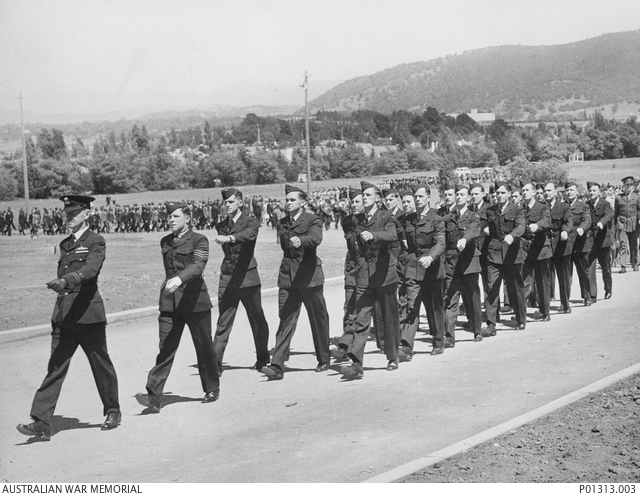The Australian War Memorial, 80 years on.
The Australian War Memorial was unveiled to the public by the Governor-General, Lord Gowrie on November 11, 1941. Over 5000 people attended the event including the Prime Minister John Curtin, General Sir Thomas Blamey, and 18 recipients of the Victoria Cross. In the 80 years since countless Australians have made the pilgrimage to the site of national remembrance and honour.
Aerial view of the Australian War Memorial taken the day before the official opening of the Memorial on Remembrance Day 1941.
The Memorial is more than a monument. Inside the sandstone building, with its copper-clad dome, selections from a vast National Collection of war relics, official and private records, art, photographs, film and sound are employed to tell the story of the Australian nation's experience in two world wars, regional conflicts, and international peacekeeping.
In 1927 an architectural competition to design an Australian war memorial failed to produce a clear winner. However, the work of two talented architects from Sydney stood out. As personalities they could not have been more different. One was the flamboyant Emil Sodersteen, the other the more reserved yet no less innovative John Crust. Of all 69 entrants it was only Crust’s design that came in under budget. The two were encouraged to work together and submit a joint design. The new proposal incorporated both Sodersteen's monumental Art Deco vision, with its domed roof to the Hall of Memory, and Crust's concept of arched cloisters to house the Roll of Honour and provide a place for contemplation and remembrance. The joint design was accepted, but building work could not start till 1934. Emil Sodersteen resigned from the project in 1938, leaving the building to be completed by John Crust
As Australia entered the Second World War, the Memorial was still not complete. It finally opened to the public on Remembrance Day, 11 November 1941, providing the essential form of the building we see today. It had been intended to be devoted primarily to the First World War; but it was clear that the new war was even more engulfing, and inevitably the scope of the Memorial would have to expand. In 1941 the government extended the Memorial's charter to include the Second World War; in 1952 it was again extended to include all Australia's wars.
The iconic design that was opened to the public in 1941 still forms the foundation and the heart of the building we see today.
Learn more about the history of the Memorial
https://www.awm.gov.au/john-crust-collection
https://www.awm.gov.au/articles/blog/john-crust-memorial-architect

























